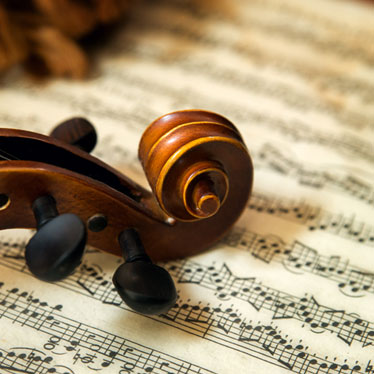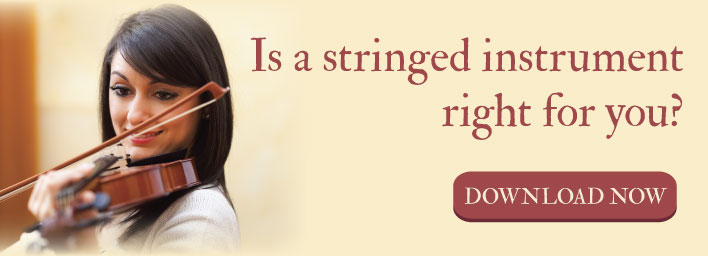Learn How To Hear And Play The Differences Among Pizzicato, Staccato And Spiccato

Learning to play a string instrument means spending a lot of time on at least two things: articulation and Italian. Learning a bit of Italian, musical words and otherwise, is helpful (and necessary). But sometimes, just knowing the English translation of the musical term isn’t enough to help you understand what it means for your playing.
Here we get into the differences among three Italian terms used to describe similar, yet distinct, articulations: pizzicato, staccato, and spiccato. They all refer to a short note, yet are performed differently and produce their own sound. Read on to learn their individual characteristics.
Pizzicato
Pizzicato is the action of plucking the string with your fingers, instead of using a bowing technique. If the composer put a “pizz.” notation in the sheet music, that is where the performer should use pizzicato. The plucking sound provides another form of texture to a piece. Its sound is easily recognizable.
While pizzicato is easy to spot, that doesn’t mean all pizzicato notes are played the same ways. As a performer, you have many options to create a variety of pizzicato sounds and timbres. To create variations, think about:
- Where will you pluck the string? Typically, you’ll do this somewhere between the bridge and the fingerboard. You’ll get a louder tone the nearer the bridge the strings are plucked. But don’t limit yourself. The closer you move to the fingerboard, you’ll get a softer, more resonant tone.
- How much pressure will you use with the finger pressing down on the string to be plucked? The amount of pressure here will impact pitch.
- How firmly will you stop the string before plucking it? You’ll achieve a stronger ring if you pluck a string that’s no longer vibrating. Yet sometimes the composition requires a fast pizzicato, which only leaves time to semi-stop the string before plucking it. This will give you a more muffled pizzicato.
- How will you use your finger to execute the plucking motion? If you want the fullest sound, use the fleshiest part of your finger and pull the string to the right at a low angle. But you can also use the tips of your fingers or pluck at a higher angle.
Last, you should also explore playing pizzicato with your left hand. Right-hand plucking is more common, but left-hand pizzicato provides a uniformity of notes that the right hand can’t achieve. This is because you’re using your left hand to both stop and pluck the string. Here’s a short tutorial on left-hand pizzicato from Ray Chen.
Staccato and Spiccato
The bowing techniques of staccato and spiccato are other ways to get a short, distinct note from a string instrument, but not so distinct as pizzicato. That’s the point (so to speak). The two techniques are so similar that they’re notated in compositions the same way – with a small dot above the note. The composer often leaves the choice whether to use spiccato or staccato to the interpreter of the performance.
While both techniques use the bow, the key difference between them is that the bow stays on the string when playing staccato, but comes off the string when playing spiccato. That’s why spiccato is considered a bouncing stroke, whereas staccato is not.
Hearing the distinction takes some practice. Because the bow stays on the string after a staccato stroke, it works to stop the vibration of the note. Therefore, a staccato sound is a bit crisper and shorter than a spiccato sound. When the performer lifts the bow off the string when playing spiccato, there’s nothing to keep the strings from continuing to vibrate. Although now they’re vibrating declines, which you’ll hear in the end of the note, it tails off, instead of stopping sharply. Yet in both cases, there’s a drop of silence between each note as they’re both short notes.
Play the same passage in staccato and then spiccato. Can you hear the difference? The spiccato notes should end with almost an aspirated sound, in contrast to the sharper, most distinct staccato playing. Your forearm should certainly be more tired after playing spiccato. Use your forearm to shape the sound by bouncing the bow on and off the string in a V or U-shape. In a U-shape, the bow will stay on the string for slightly longer, so the V-shape will provide a more angular sound. You can listen to some staccato and spiccato in Wieniawski’s Violin Concerto No.2 in D minor, Op.22, and in Saint-Saëns’s Introduction and Rondo Capriccioso in A minor for Violin and Orchestra op.28. Can you pick out the passages?


